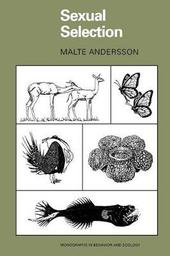
|
Sexual Selection
Paperback / softback
Main Details
| Title |
Sexual Selection
|
| Authors and Contributors |
By (author) Malte Andersson
|
| Series | Monographs in Behavior and Ecology |
|---|
| Physical Properties |
| Format:Paperback / softback | | Pages:624 | | Dimensions(mm): Height 229,Width 152 |
|
| Category/Genre | Applied ecology |
|---|
| ISBN/Barcode |
9780691000572
|
| Classifications | Dewey:591.562 |
|---|
| Audience | | Professional & Vocational | | Tertiary Education (US: College) | |
|---|
| Illustrations |
10 halftones 110 line illus.
|
|
Publishing Details |
| Publisher |
Princeton University Press
|
| Imprint |
Princeton University Press
|
| Publication Date |
16 June 1994 |
| Publication Country |
United States
|
Description
Bright colours, enlarged fins, feather plumes, song, horns, antlers and tusks are often highly sex dimorphic. Why have males in many species of animals evolved more conspicuous ornaments, signals and weapons than females? How can such traits evolve although they may reduce male survival? Such questions prompted Darwin's perhaps most scientifically controversial idea - the theory of sexual selection. This still challenges researchers today as they try to understand how competition for mates can favour the variety of sex-dimorphic traits. Reviewing theoretical and empirical work in this field, Malte Andersson provides a major up-to-date summary of sexual selection. The author describes the theory and its recent development; examines models, methods and empirical tests; and identifies many unsolved problems. Among the topics discussed are the selection and evolution of mating preferences; relations between sexual selection and speciation; constraints on sexual selection; and sex differences in signals, body size and weapons.
Author Biography
Malte Andersson is Professor of Zoology at the University of Gothenburg in Sweden.
ReviewsOne of Choice's Outstanding Academic Titles for 1995 "Sexual Selection provides a masterly account of both the complex mathematical theory and the relevant data... [It] deserves to be widely read as a definitive summary of what we know about sexual selection and as a guide to what remains to be done."--Trends in Ecology and Evolution
|